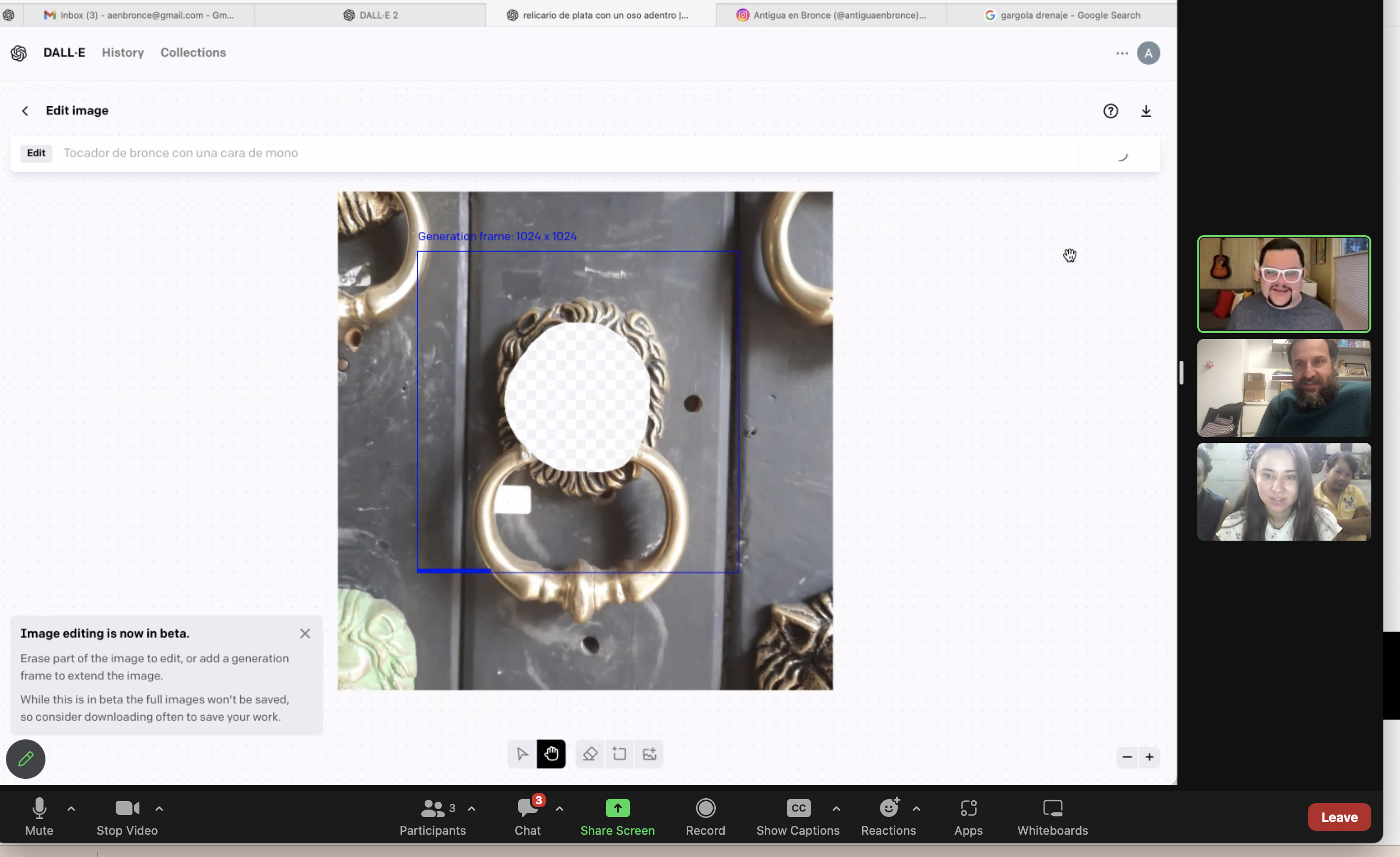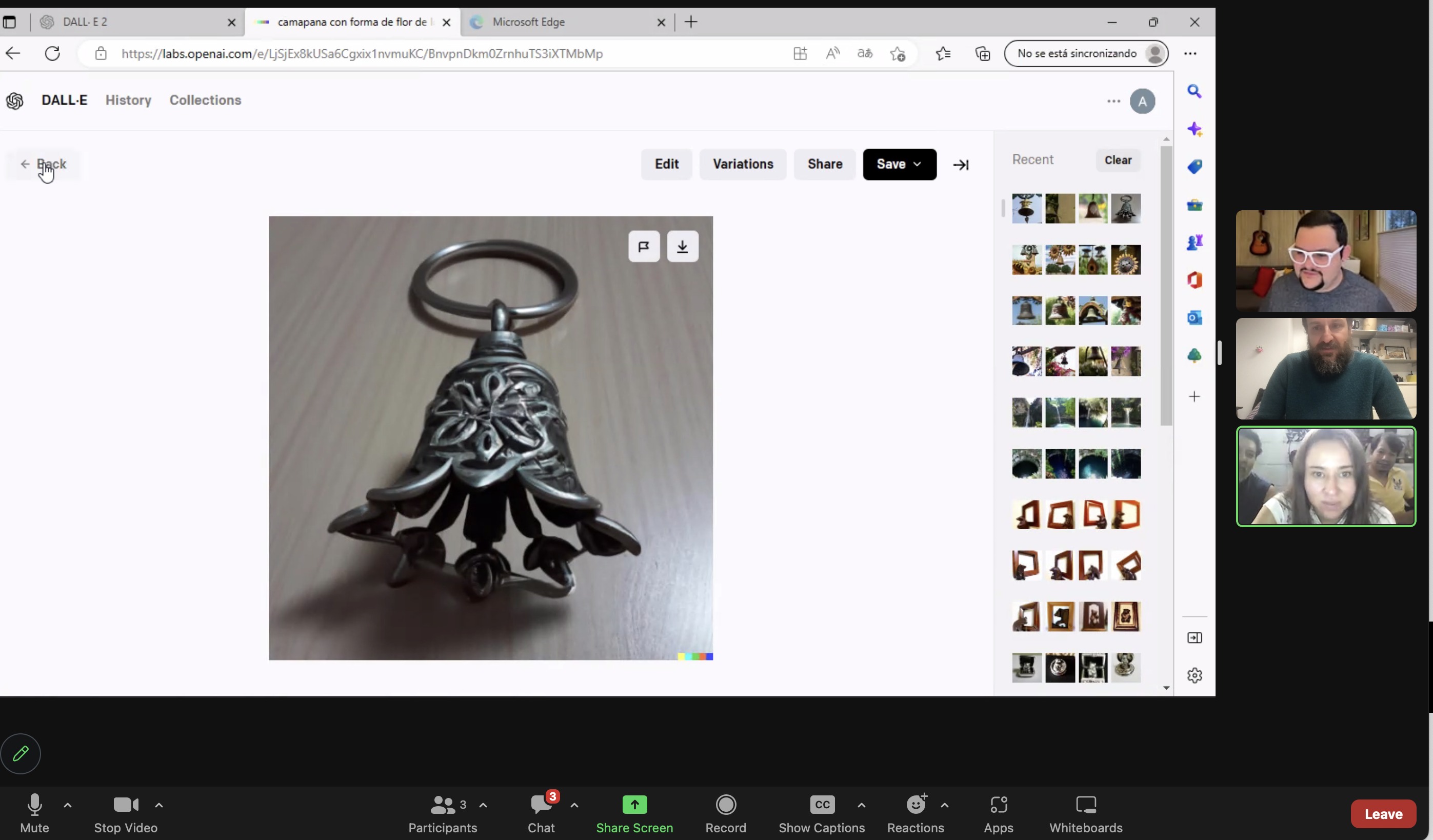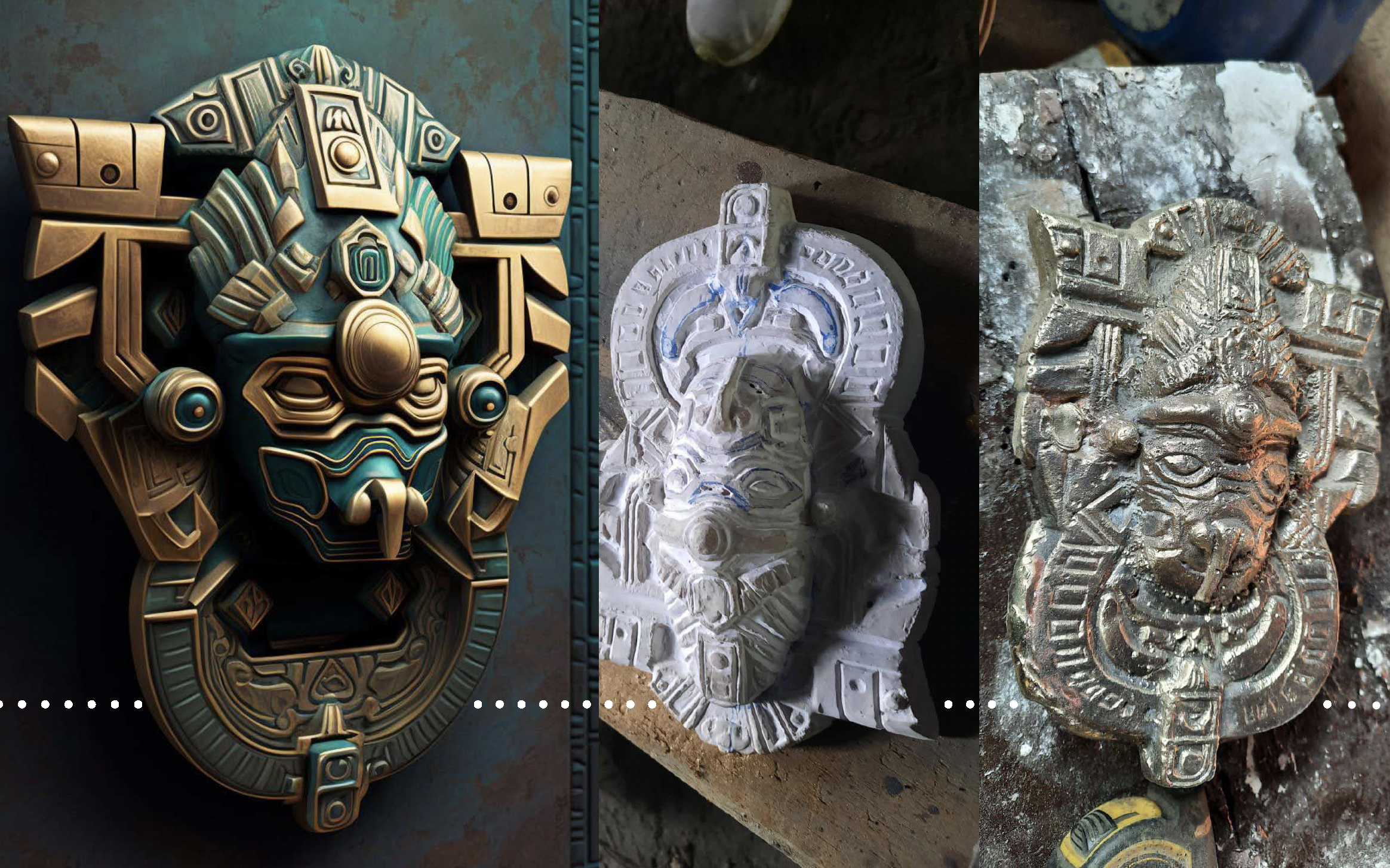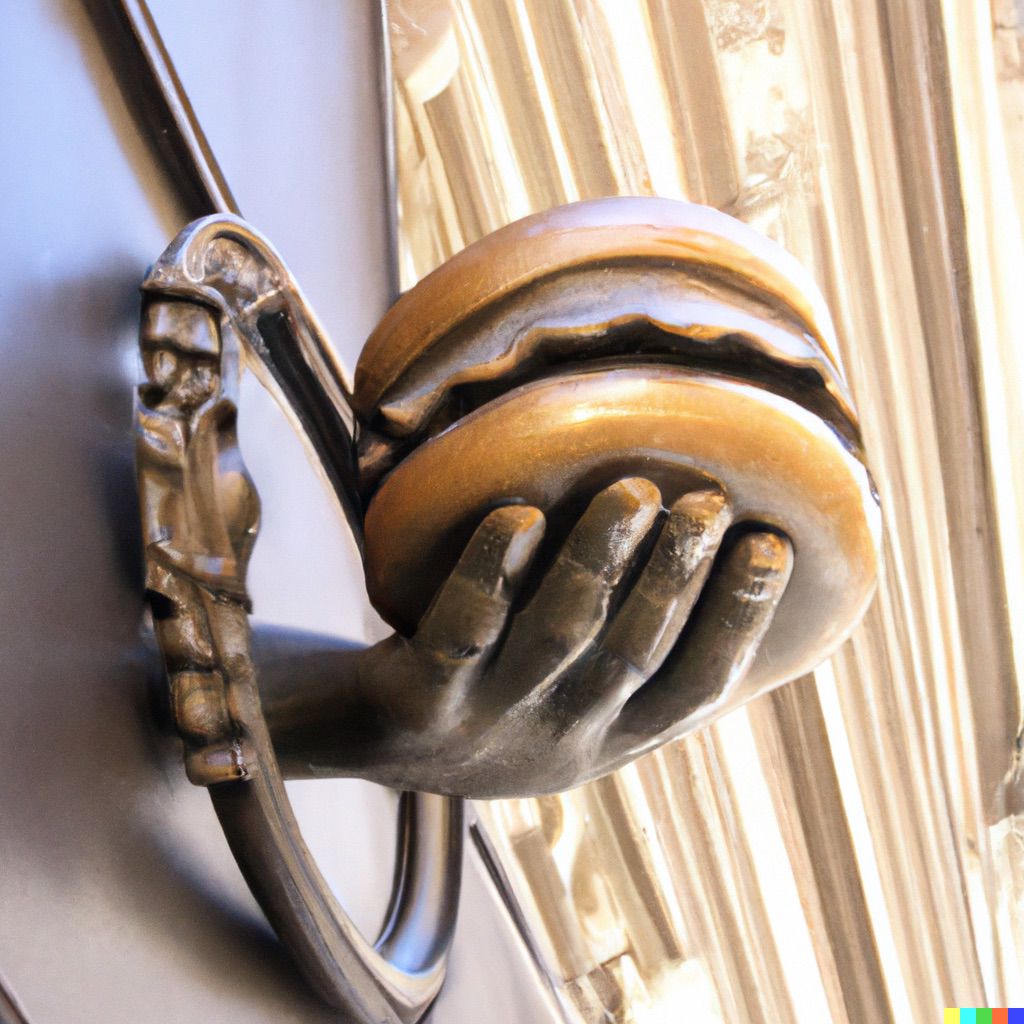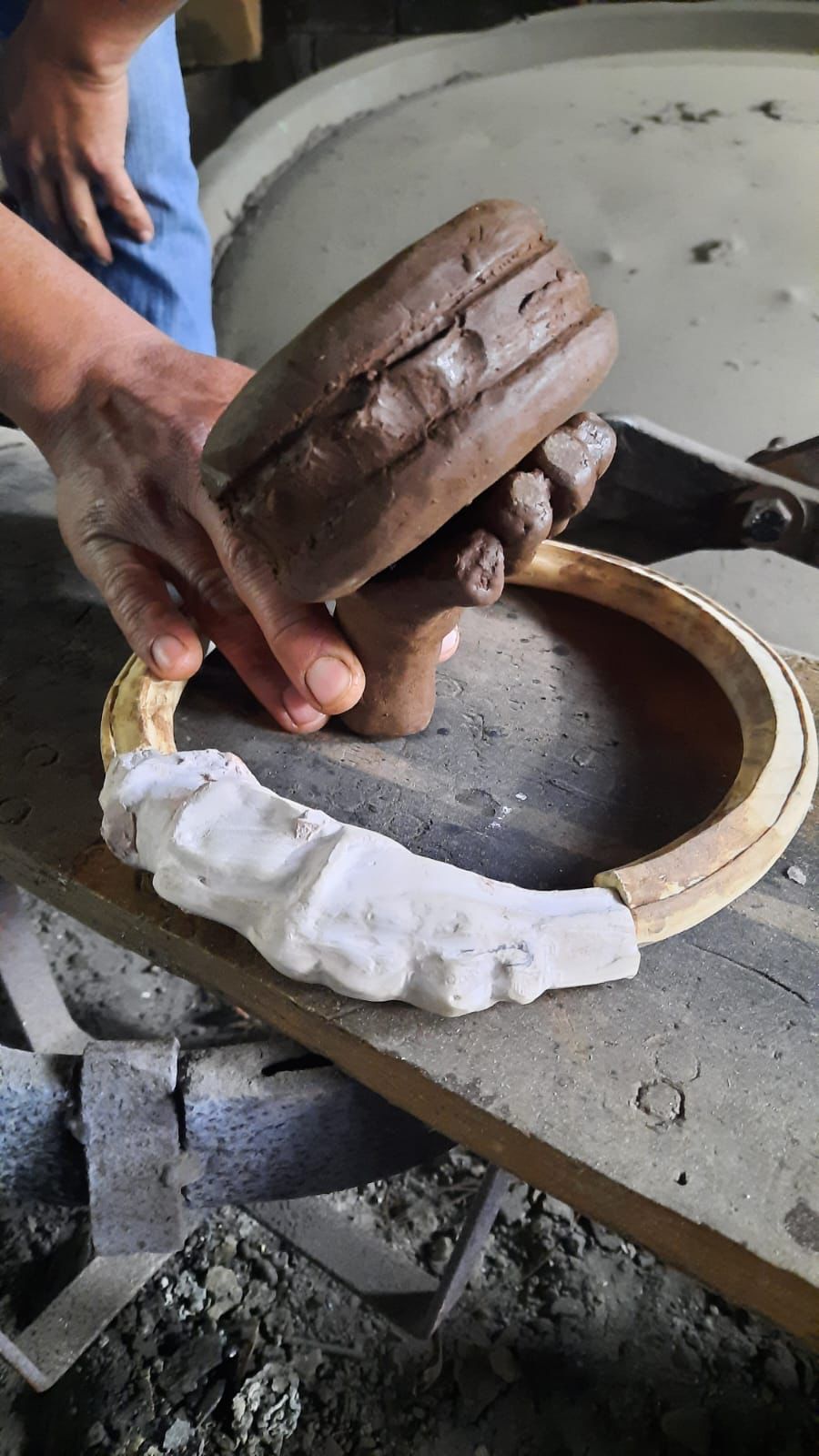Past-Fast-Forward
“Artificial Intelligence & Traditional Craft: a critical analysis of tools, access and the vernacularization of colonizing technologies”
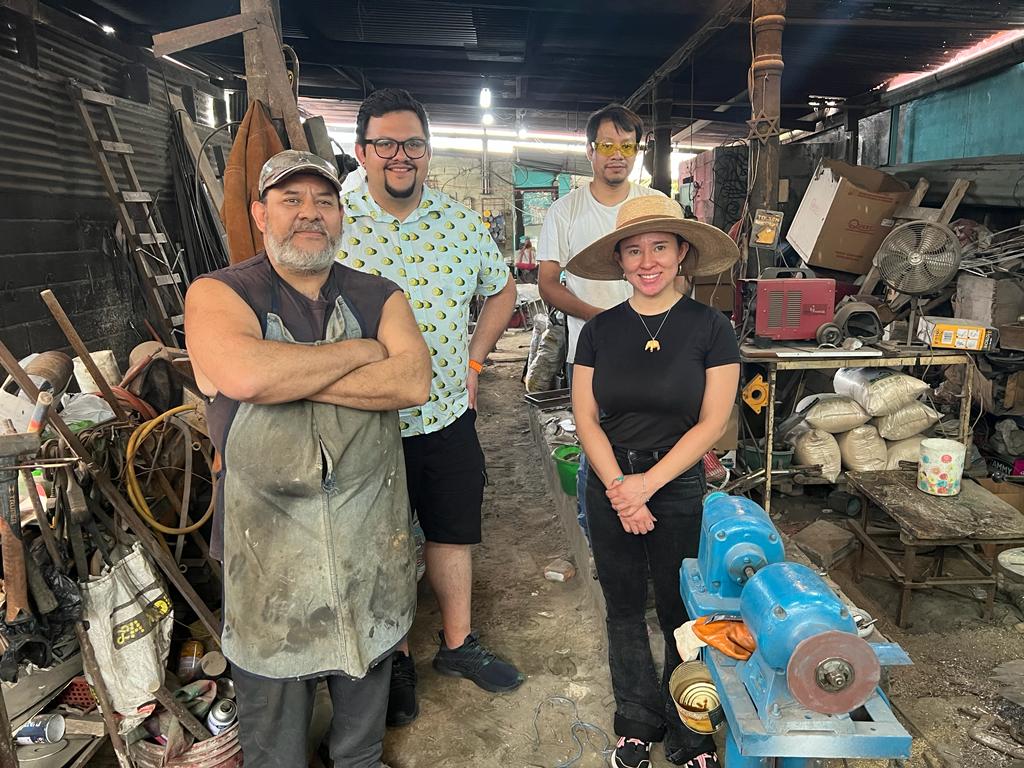

Read an article about the project here
Cast bronze artisans in the colonial town of Antigua Guatemala, collaborated remotely with designers and used generative Artificial Intelligence tools to create a series of images that drove the conversation while creating a series of objects that were later fabricated using a traditional sand casting process. Here you will find a selection of images generated by the AI tool (OpenAI DALL-E) from the artisans’ text prompts, later used to create the sculptures you see on th opposite side of this exhibit. The objects created, three bronze door knockers, are representation of three ways through which the artisans operated in their daily interaction with an hypothetical client adding AI to their toolbox.
Since Industrial Design made its official debut as one of the foundational elements of the 19th-century's industrial revolution, it was clear that the dialogue between artifacts, humans, and machines got exponentially complicated, not to mention the ownership of the so-called technological progress and the inequalitarian system of power that followed. From the resistance of the Arts and Craft movement to the enthusiastic Bauhaus’ machine-oriented aesthetics, the relation between who designs and who or what produces, has frequently reconfigured the value of the different roles involved in the production process. While in modern western societies, the reaction to the capitalist economic system has fostered a revival of craft as an elitist “designer as makers” trend, in the global south the highly majority of the artisans, holding traditions and endangered skills, are still relegated to the lowest part of the society. Those vernacular makers don't usually possess the tools and technologies to evolve their production, they are frequently considered as mere executors of other’s ideas or, even worse, forced to copy mainstream products and styles. Moreover, the artifacts they produce are often stereotyped and locked in the past, on one side preserved as simulacra of local traditions and on the other side relegated to the guise of souvenirs and hugely limited in their potential present value. Looking at the contemporary advent of algorithm-based creation platforms, we may expect that the distance between the digital realm and the local material culture will keep increasing and soon be too big to bridge.
